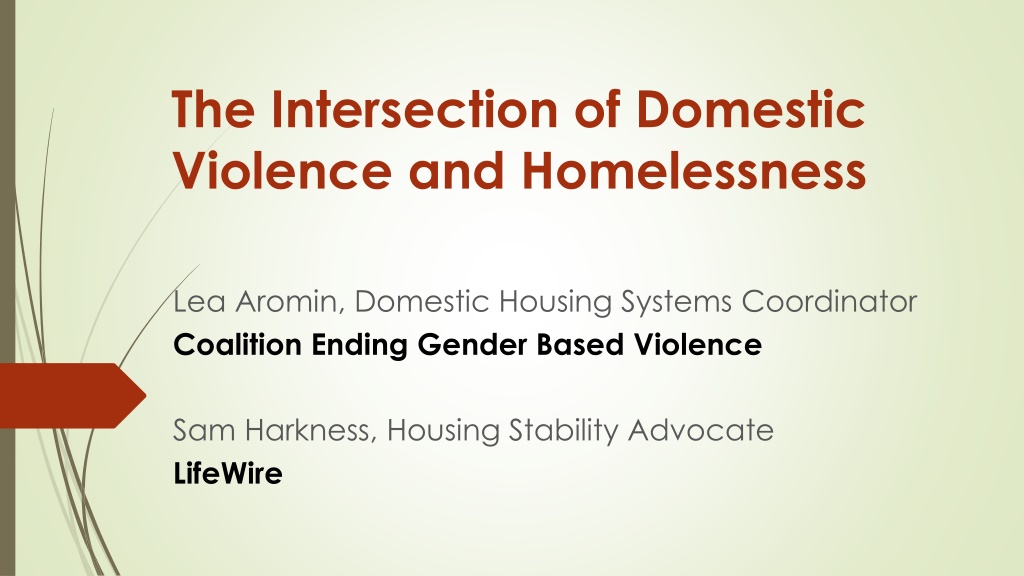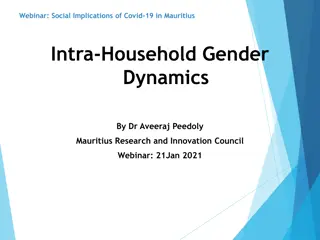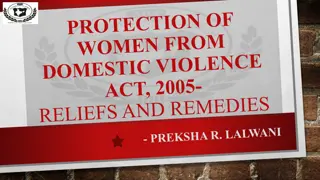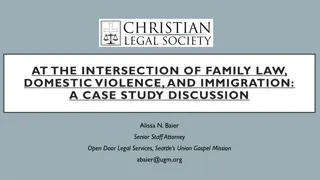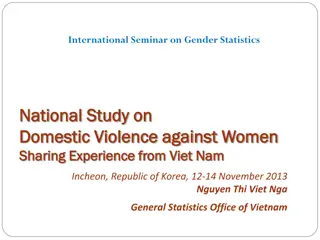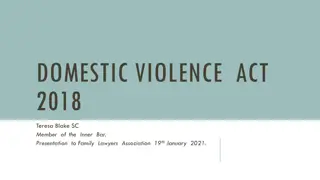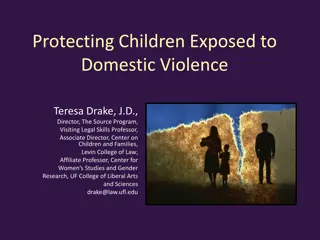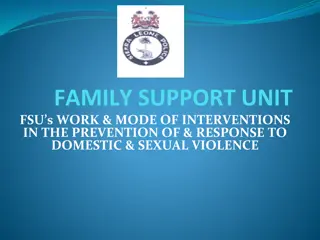Understanding the Intersection of Domestic Violence and Homelessness
Exploring the complex relationship between domestic violence and homelessness, this resource sheds light on how survivors are impacted, why domestic violence often leads to homelessness, and the profound trauma that affects housing stability. Key takeaways emphasize the importance of recognizing and responding to domestic violence, building partnerships with service providers, and understanding the significant impact on individuals' lives. Through poignant statistics and insights, the document highlights the urgent need for support and intervention to address this critical issue.
Download Presentation

Please find below an Image/Link to download the presentation.
The content on the website is provided AS IS for your information and personal use only. It may not be sold, licensed, or shared on other websites without obtaining consent from the author. Download presentation by click this link. If you encounter any issues during the download, it is possible that the publisher has removed the file from their server.
E N D
Presentation Transcript
The Intersection of Domestic Violence and Homelessness Lea Aromin, Domestic Housing Systems Coordinator Coalition Ending Gender Based Violence Sam Harkness, Housing Stability Advocate LifeWire
Key Takeaways 1. The Intersection of DV and Homelessness: you are working with survivors every day! 2. Recognizing and Responding to Domestic Violence: The Relationship is the Intervention Safety v Safer 3. Overview of DV Advocacy and DV Housing: building partnerships with DV providers is key
WHY IS THIS IMPORTANT?! (Y)OUR PEOPLE ARE (Y)OUR PEOPLE
of all domestic violence victims become homeless at some point in their lives. Source: Baker, C., Cook, S., & Norris, F. (2003) 4 38% In a California study, women who experienced interpersonal violence in the last year had almost 4 times the odds of reporting housing instability than women who did not experience interpersonal violence. Source: Pavao, J., Alvarez, J., Baumrind, N., Induni, M., & Kimerling, R. (2007) Among mothers with children experiencing homelessness, more than 80% had previously experienced domestic violence Source: Aratani, Y. (2009)
How does Domestic Violence lead to Homelessness? 5 DV is a leading cause of homelessness for women and children (families) in the U.S. Survivors often must leave housing to escape DV Survivors may be unable to afford to stay if abuser leaves May be evicted due to abuser s behavior DV interferes with ability to access housing - bad credit, poor rental histories, safety needs Abusers may sabotage survivor s economic stability - trouble paying deposit, rent and utilities
The Impact of Trauma on Housing Stability DV/SA can severely disrupt survivors lives & are significant contributing factors to chronic homelessness in women Survivors who can t retain their housing are highly vulnerable to re-abuse Homeless survivors may seek the perceived safety of a new partner and become the victim of survival sex and other coercive control Survivors may engage in illegal activity in order to survive, leading to criminal history records Survivors frequently become disconnected from their social support network
How does Domestic Violence lead to Homelessness? 7 DV is a leading cause of homelessness for women and children (families) in the U.S. Survivors often must leave housing to escape DV Survivors may be unable to afford to stay if abuser leaves May be evicted due to abuser s behavior DV interferes with ability to access housing - bad credit, poor rental histories, safety needs Abusers may sabotage survivor s economic stability - trouble paying deposit, rent and utilities
People of color more likely to experience homelessness Center for Social Innovation s SPARC (Supporting Partnerships for Anti- Rascist Communities) project examined over 111,000 HMIS records, collected 148 oral histories of people of color experiencing homelessness, conducted 18 focus groups in six U.S. communities, and found: More than 78% of people experiencing homelessness were people of color. The general population in the U.S. is 74% White, 12.4% Black, and 17.2% Hispanic/Latinx. Black people comprise 13% of the general population in the U.S. and 26% of those living in poverty, yet account for more than 40% of the homeless population. Poverty rates alone don t explain the over- representation. Homelessness among American Indian/Alaska Native people was three to eight times higher than their representation in the general population.
Root Causes of Homelessness: Structural Lack of affordable housing, economic immobility, and systemic racism People did not become homeless because of lack of financial resources, but rather as a result of fragile social networks marked by two weak points: lack of financial capital and lack of emotional support. SPARC calls this phenomenon network impoverishment a phenomenon in which it is not just the individual or family who is experiencing poverty; the network itself functions in an impoverished state DV/IPV was also identified as a common thread in the lives of many respondents across gender and age ranges.
DONT FORGET THE CHILDREN 10 More than half of DV survivors live in households with children under 12 47% of homeless school-aged children and 29% of homeless children under 5 have witnessed domestic violence in their families Exposure to violence significantly impacts development, behavior, education, health, mental health, and increased risk- taking behaviors as adolescents and adults
